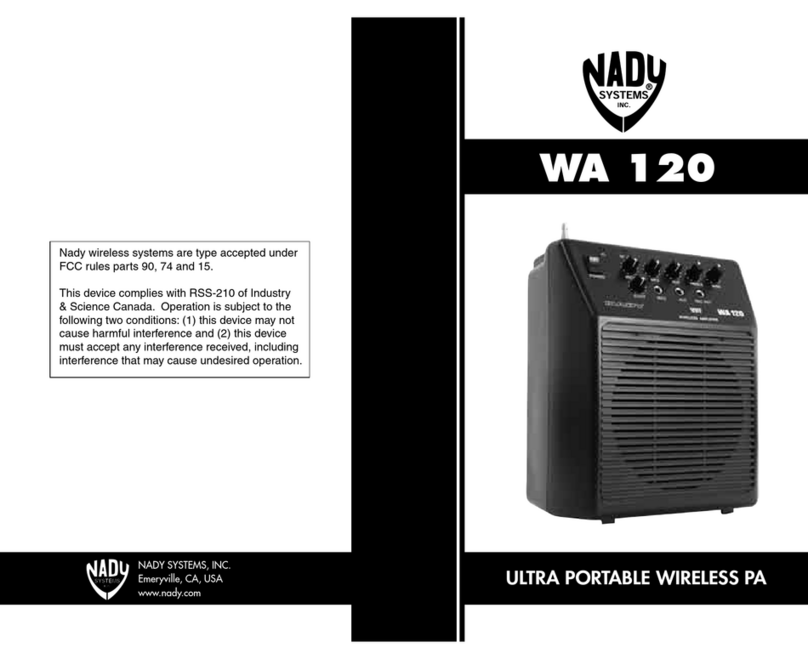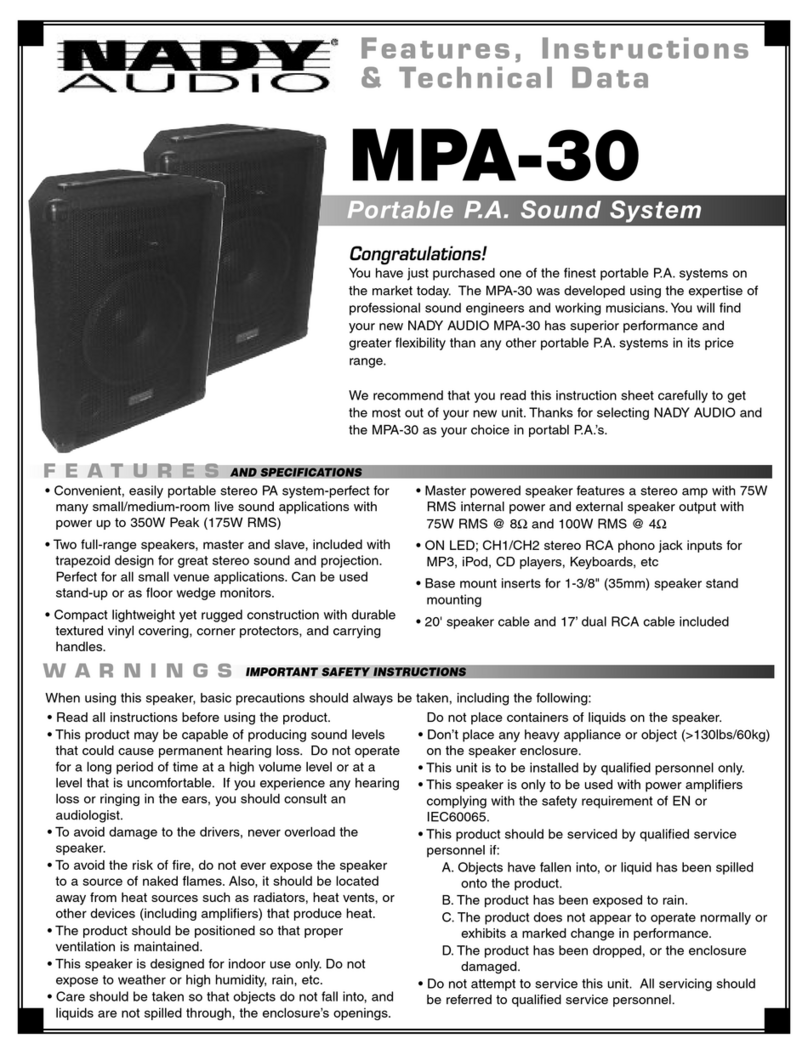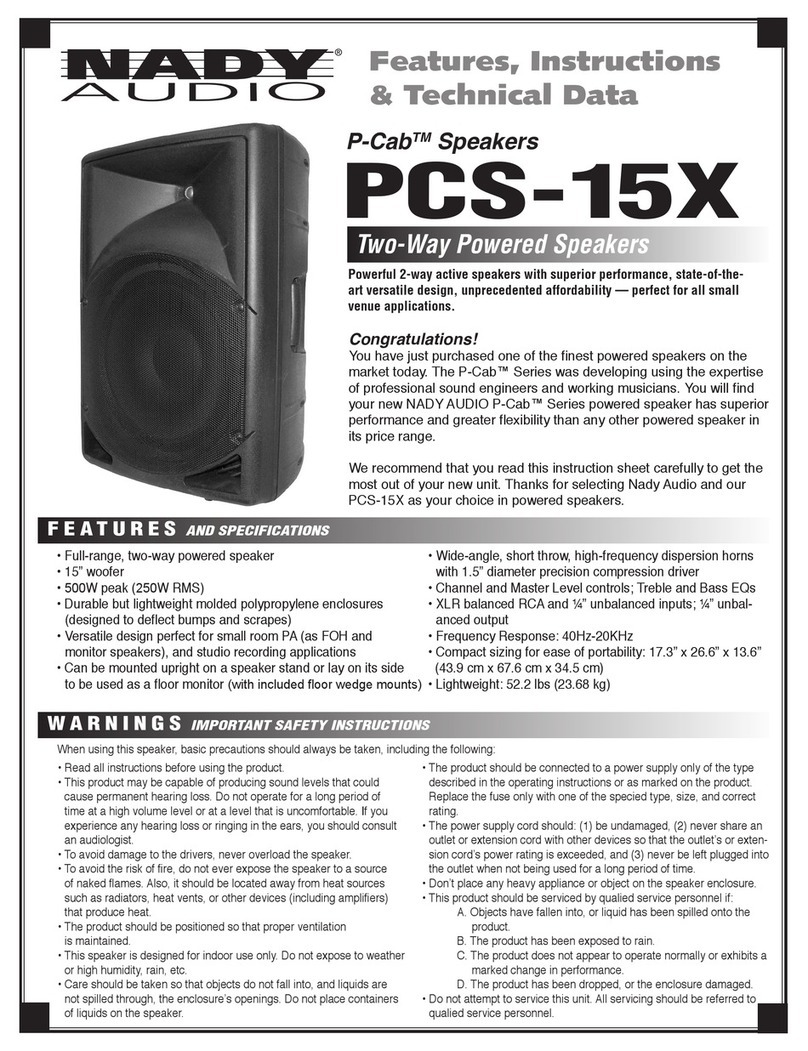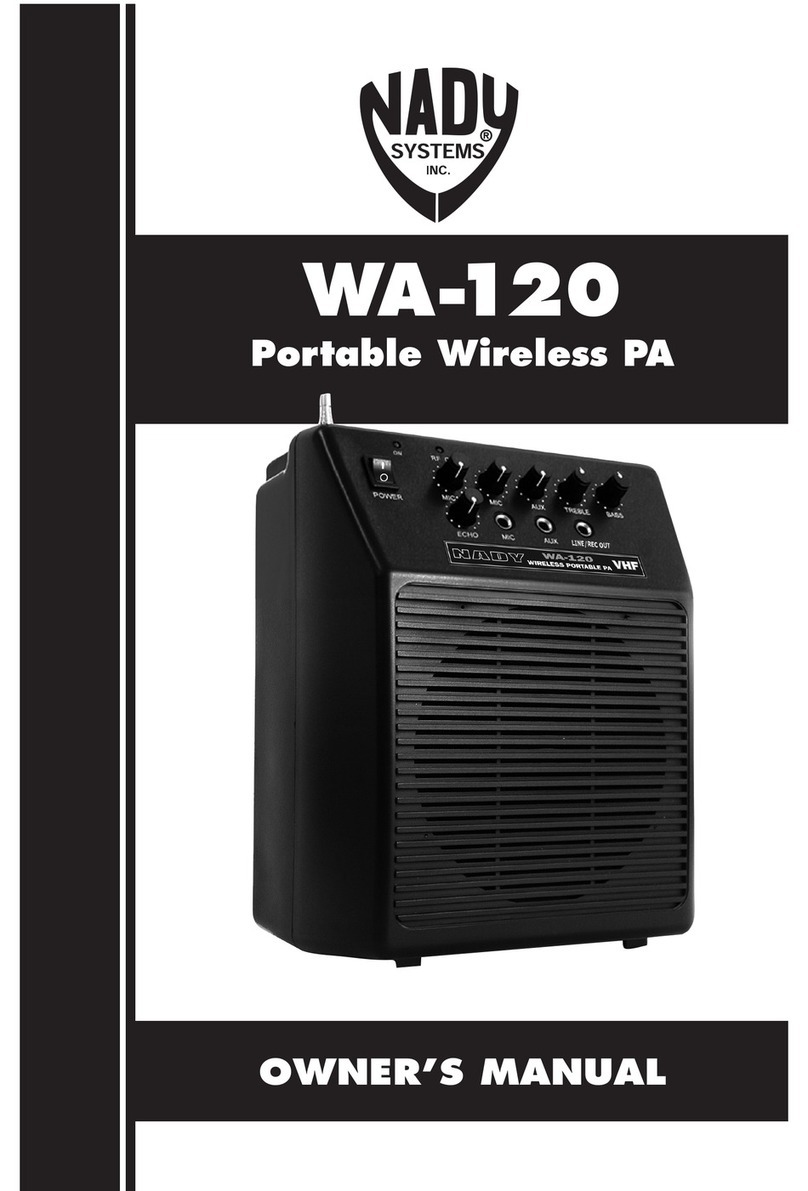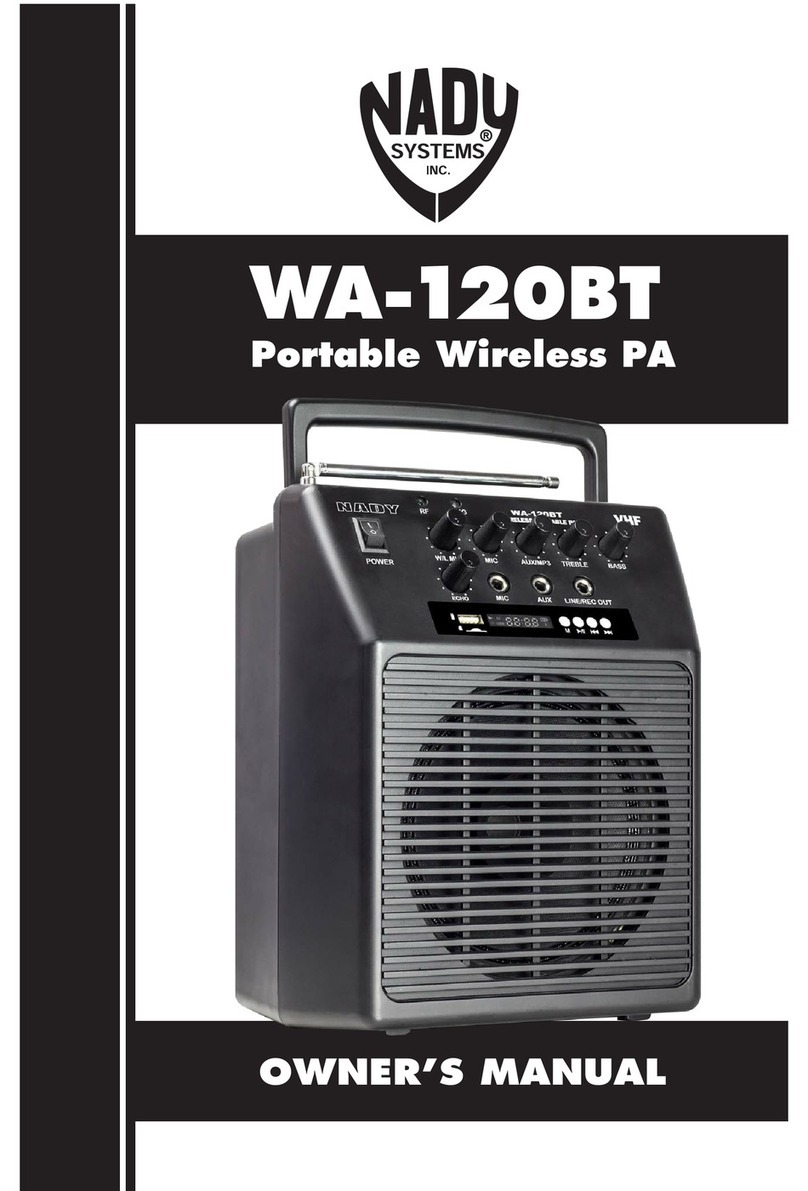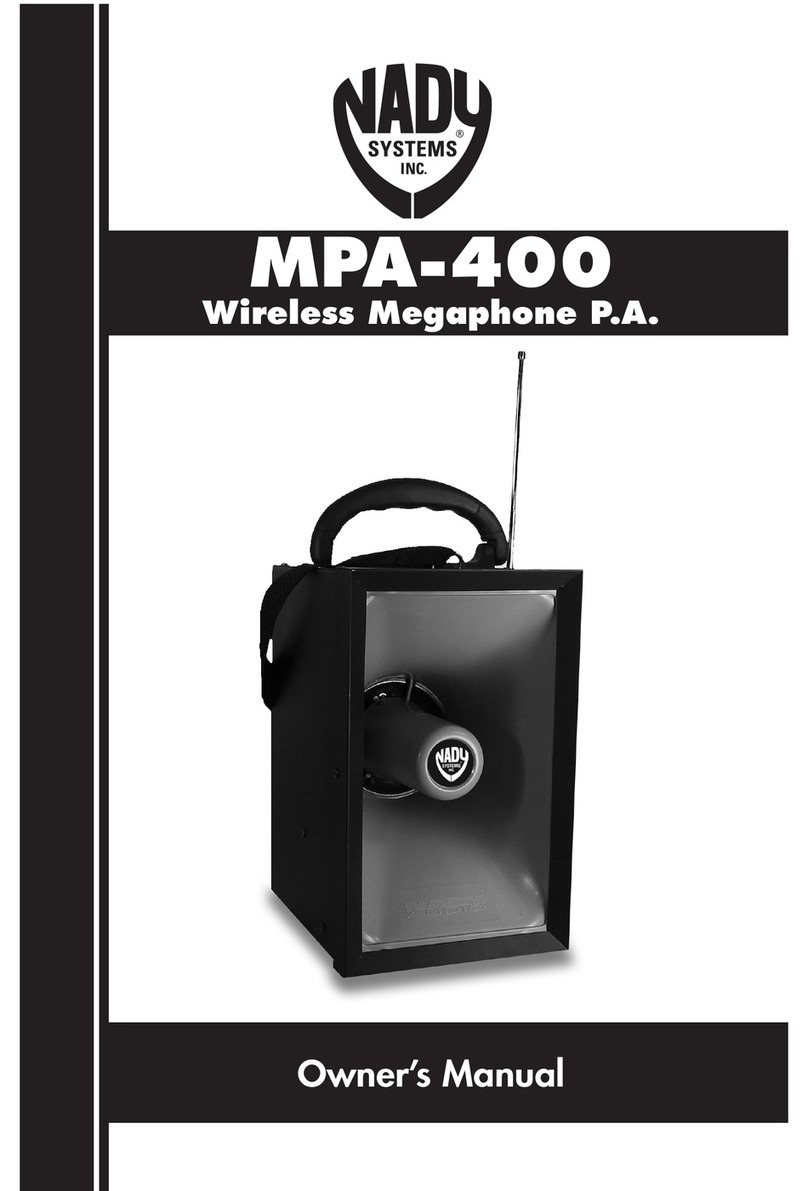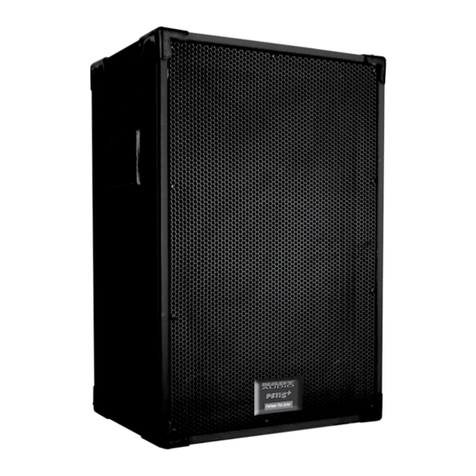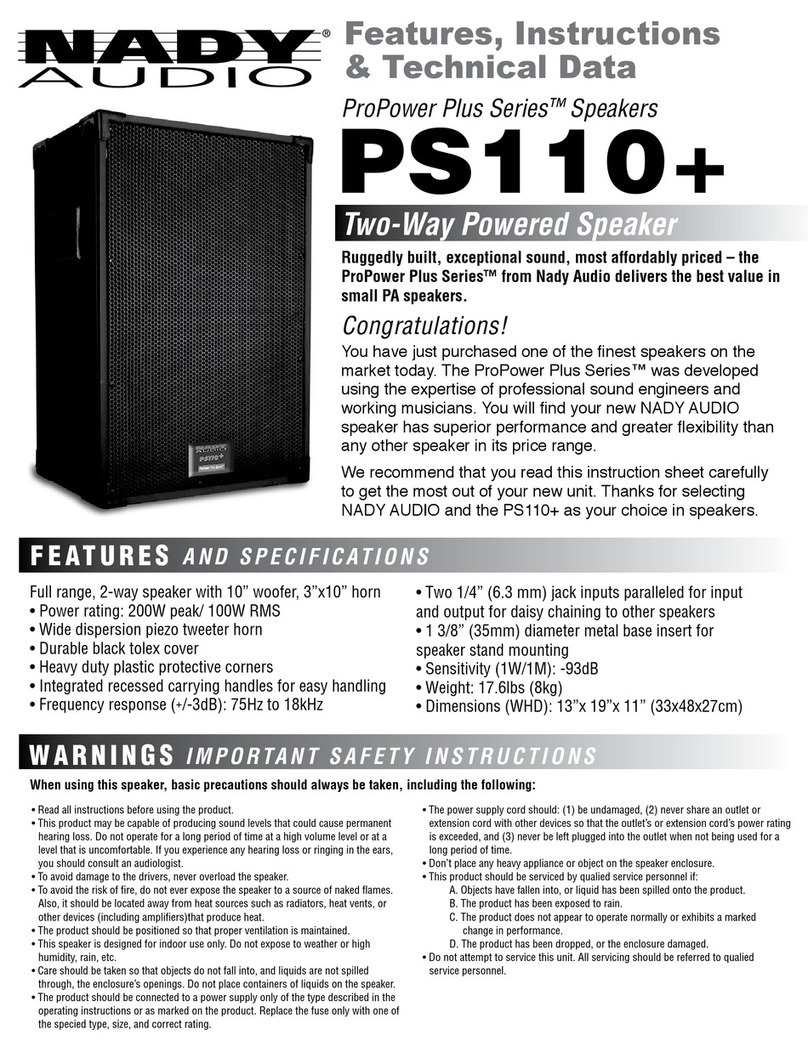15
SPECIFICATIONS
AMPLIFIER SPECIFICATIONS
Audio Output Power ......................................................................................................... 20W (MAX)
Speaker Load ........................................................................................4 Ohms (6-1/2 inch Speaker)
Supply Voltage .................................................................. External AC adaptor or DC (12-15V)/1.2A
Internal Power 8xD alkaline or 12V/1.2A rechargeable battery
Power Consumption .................................................................................................................40VAC
Connectors .............................................. AC/DC in, 1/4” (6.3 mm) unbalanced MIC/AUX/REC jacks
Input Sensitivity MIC, AUX .......................................................................................... 18mV, 132mV
REC output level ......................................................................................................................360mV
Frequency Response .......................................................................................50Hz to 20kHz +/-3dB
Total Harmonic Distortion ....................................................................................... <1% THD, normal
Signal-to-Noise Ratio (at rated output) ...................................................................................... -75dB
Tone Control Range ...............................................................+/-5dB (BASS 100Hz/TREBLE 10kHz)
Volume/Level Controls ...............................................................MICS, AUX, ECHO, BASS/TREBLE
9V battery Charger Current .............................................................................................. 5-70mA DC
Dimension ............................................................................ 8.3” x 10.6” x 5.4” (211 x 270 x 137mm)
Weight ........................................................................................................................... 5.3lbs (2.4kg)
WIRELESS RECEIVER SPECIFICATIONS
Frequency Response ...........................................................................................100Hz-16kHz, -3dB
Harmonic Distortion ............................................................................................. <0.6% THD, normal
Signal-to-Noise Ratio (REC out) ............................................................................................... -80dB
RF Carrier Frequency........................................... ........ Single UHF Frequency (797-805MHz range)
Frequency stability ..............................................................................+/- 0.005% Crystal Controlled
Modulation ............................................................................................... FM (F3E), +/-20kHz normal
Unwanted Signal Rejection ....................................................................... 60dB image and spurious
Squelch Controls ..................................................... External adjustable (-65dBm/Min, -95dBm/Max)
LED Indicators ..................................................................................................RF ON (GREEN LED)
Antennas ............................................................................................4.0” (10.2 cm) Internal antenna
Operating Range ................................................. Up to 200 ft. typical (depending on site conditions)
Up to 300+ feet (optimum line-of-sight)
TRANSMITTER SPECIFICATIONS
Models Available ..................... UH-4 Handheld, UB-4 Bodypack, and LINK 4 SNAP-ON transmitters
RF Output Power ................. +14dBm (25mW normal), +17dBm (50mW maximum allowed by FCC)
Harmonic/spurious .......................................................................................................-50dBc normal
Antenna Type .....................................................UH-4: Integral. UB-4: External permanent attached
LINK 4: Integral into hardwire Mic
Controls ................................................. Transmitter ON/Mute/OFF switch, Audio Input level control,
Phantom Power On/Off (LINK 4)
Audio Input Levels ....UH-4: 24mV. LINK 4: 24mV, UB-4: 225mV (Instr.), 310mV (HM), 75mV (Lav.)
Impedance ...................................UH-4: 3.3kΩ. LINK 4: 360Ω, UB-4: 500kΩ (Instr.), 2kΩ (HM/Lav.)
Connector .................................... UB-4: 3.5mm locking jack, LINK 4: XLR with 9V Phantom power
Indicator ................................................................................................Power and Low Battery LEDs
Battery Type ................................................................................ 9V alkaline or rechargeable battery
Battery Life ............................................................................................................ 8-10 Hours normal
Dimensions .............................................................. UH-4: 9.5” x 2.0” [L / Dia.] (24.13 cm x 5.08 cm)
UB-4: 2.5” x 4.25” x 1.0 [W / D / H] (6.35 cm x 10.80 cm x 2.45 cm)
LINK-4: 1.5” x 4.5” x 1.5” [W / D / H] (3.81 cm x 11.43 cm x 3.81 cm)
Weight (w/o batteries) .....................UH-4: 6.6 oz (187 g), UB-4: 3.1 oz (88 g), LINK 4: 2.6 oz (80 g)
TABLE OF CONTENTS
INTRODUCTION ........................................................................................................... 2
USING THIS MANUAL .................................................................................................. 2
SYSTEM FEATURES .................................................................................................... 3
WA-125U CONTROL AND CONNECTIONS ................................................................. 4
WA-125U OPERATING INSTRUCTIONS ..................................................................... 6
UH-4 HANDHELD MICROPHONE TRANSMITTER ..................................................... 8
UB-4 LAVALIER/HEADMIC BADYPACK TRANSMITTER .......................................... 10
LINK-4 PLUG-IN TRANSMITTER ............................................................................... 13
SPECIFICATIONS ....................................................................................................... 15
SERVICE INFORMATION ....................................................................... BACK COVER
2
INTRODUCTION
Thank you for purchasing a Nady WA-125U Wireless UHF Portable P.A. — and congratulations on
your choice. The WA-125U is the most compact of the popular line of Nady wireless P.A.’s. Ideal for
many applications, including use in classrooms, conference/meeting rooms, churches, health clubs
and small auditoriums, it is powerful, yet lightweight and easily portable. We are sure you will find
this versatile system a powerful and useful tool for your presentations.
USING THIS MANUAL
This booklet gives instructions for the operation of the WA-125U wireless portable P.A., including
handheld, lavalier, and Headmic™ systems. Please read the instructions for your system com-
pletely before operating this unit. This manual will first list the features of the WA-125U and then
will take you step by step to show you how to operate your new system. After reading the receiver
instructions, turn to the section of the booklet that covers the type of transmitter used with your new
system. Each section will give you detailed operating instructions. Also included in this manual are
system specifications and servicing information.
Specifications and design subject to change for improvement purposes without prior notice.
